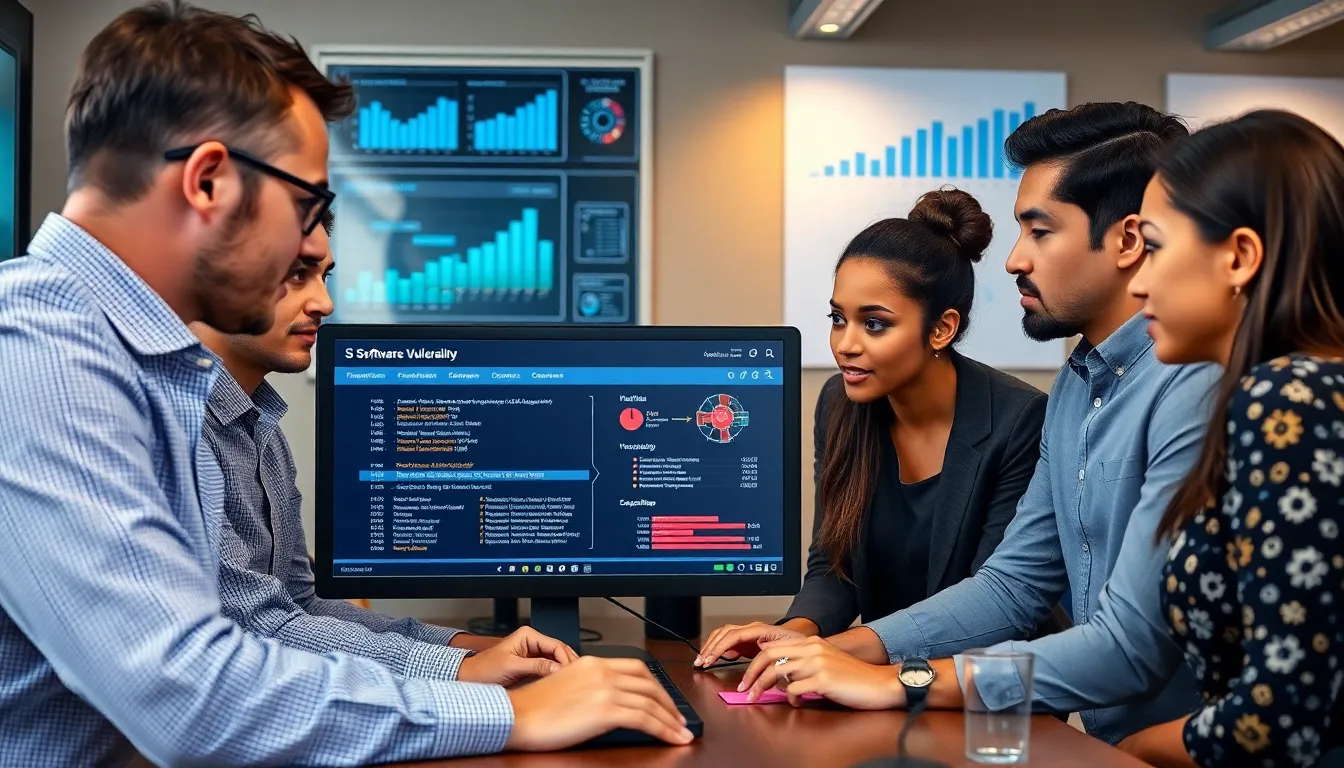Table of Contents
ToggleIn a world where software reigns supreme, staying ahead of vulnerabilities is like trying to catch a greased pig at a county fair. With cyber threats lurking around every digital corner, software vulnerability alerts have become the unsung heroes of the tech universe. They swoop in like caped crusaders, ready to save the day before disaster strikes.
Imagine your favorite app suddenly turning into a hacker’s playground. Not a pleasant thought, right? That’s where these alerts come in, sounding the alarm before things get out of hand. By keeping an eye on vulnerabilities, they help protect sensitive data and maintain trust in the digital realm. So buckle up and get ready to dive into the fascinating world of software vulnerability alerts, where knowledge is not just power—it’s your best defense against the chaos of the cyber world.
Understanding Software Vulnerability Alerts
Software vulnerability alerts serve as crucial notifications highlighting potential security risks within applications and systems. These alerts help organizations address vulnerabilities promptly, safeguarding sensitive information.
Definition and Importance
A software vulnerability alert provides information about security weaknesses in software products. These weaknesses can expose systems to cyber threats, making alerts vital for risk management. Timely responses to these alerts reduce the likelihood of successful attacks, maintaining the integrity of data and trust in technology. Organizations rely on these alerts to prioritize patches and updates, ensuring robust security measures. Regular monitoring of alerts helps teams stay informed about emerging risks and best practices within the industry.
Key Components of Vulnerability Alerts
Several components make up an effective vulnerability alert. First, the notification typically includes a unique identifier for the vulnerability, enabling easy tracking. Alerts also describe the nature of the vulnerability, detailing its potential impact on systems. Affected software versions get listed, providing clarity on which environments need immediate attention. Recommended actions often accompany these alerts, guiding users on how to mitigate risks. Finally, urgency levels help organizations prioritize responses, ensuring critical vulnerabilities receive swift attention.
Types of Software Vulnerability Alerts
Software vulnerability alerts come in various forms, each serving a specific purpose in addressing security issues. Understanding these types helps organizations implement effective security measures.
Major Categories
Software vulnerabilities typically fall into three major categories. Input vulnerabilities arise when applications fail to validate user input, leading to risks like SQL injection. Configuration vulnerabilities occur when default settings remain unchanged, allowing attackers to exploit easily accessible features. Code vulnerabilities derive from programming flaws, such as buffer overflows. Each category requires different approaches for mitigation and highlights the need for constant vigilance.
Severity Levels
Severity levels categorize vulnerabilities based on their threat potential. Alerts are often classified into four primary severity levels: Critical vulnerabilities demand immediate action due to their potential for widespread harm. High vulnerabilities require prompt attention but may pose a lesser immediate threat. Medium vulnerabilities are less urgent and often involve mitigatable risks. Low vulnerabilities indicate minimal risk and can be scheduled for remediation. Accurate assessment of these levels helps organizations prioritize their response actions effectively.
How to Respond to Software Vulnerability Alerts
Organizations must respond quickly and effectively to software vulnerability alerts to safeguard their systems. Understanding immediate actions and long-term strategies is crucial for maintaining robust security.
Immediate Actions
First, assess the alert’s severity level. Critical alerts require immediate attention, while lower-severity issues can be addressed later. Next, identify affected software versions to minimize the risk of exploitation. It’s essential to apply patches or updates as soon as possible, especially for critical vulnerabilities. Testing systems after implementing fixes ensures that everything functions correctly. Furthermore, communicate with relevant teams, including IT and cybersecurity, to coordinate a unified response. By documenting each step, organizations can track their response and improve future protocols.
Long-Term Strategies
Establishing a proactive vulnerability management program strengthens defenses against future threats. Regularly scheduled vulnerability assessments help identify weaknesses before they become critical. Training staff on recognizing and handling alerts enhances the overall security posture. It’s beneficial to stay informed about emerging vulnerabilities and best practices through industry news and reports. Incorporating a culture of security awareness fosters accountability among team members. Lastly, maintaining an inventory of all software and its versions aids in tracking vulnerabilities effectively, ensuring that prioritized responses remain streamlined and efficient.
Tools and Resources for Managing Vulnerability Alerts
Effective management of vulnerability alerts relies on the right tools and practices. Organizations can choose from a variety of automated solutions and manual methods to enhance their vulnerability response strategies.
Automated Tools
Automated tools streamline the identification and management of software vulnerabilities. Solutions like vulnerability scanners regularly assess systems for known issues. Tools such as Nessus, Qualys, and Rapid7 provide continuous monitoring and alerting. Integration with ticketing systems improves communication between security and IT teams. Dashboards offer real-time insights, enabling prompt action on high-severity alerts. Reports generated by these tools help teams prioritize their efforts based on risk levels. Furthermore, automation reduces human error, improving overall response time to alerts.
Best Practices for Manual Monitoring
Manual monitoring still plays an important role in vulnerability management. Regularly reviewing security advisories from vendors ensures awareness of the latest vulnerabilities. Establishing a dedicated team to track these alerts creates a strong line of defense. Checking vulnerability databases, like the National Vulnerability Database (NVD), keeps teams informed. Prioritizing alerts based on severity levels allows organizations to focus on critical threats first. Implementing a structured process for assessing and addressing alerts helps maintain an organized approach. Training staff on recognizing and responding to alerts fosters a culture of security awareness.
Conclusion
Software vulnerability alerts are indispensable in today’s digital environment. They empower organizations to act swiftly against potential threats and safeguard sensitive information. By understanding the nuances of these alerts and categorizing vulnerabilities effectively, teams can prioritize their responses and implement robust security measures.
Moreover, the combination of automated tools and manual oversight creates a well-rounded strategy for managing vulnerabilities. Regular monitoring and a proactive vulnerability management program not only enhance security but also foster a culture of awareness within organizations. Embracing these practices ensures that businesses remain resilient in the face of ever-evolving cyber threats.






